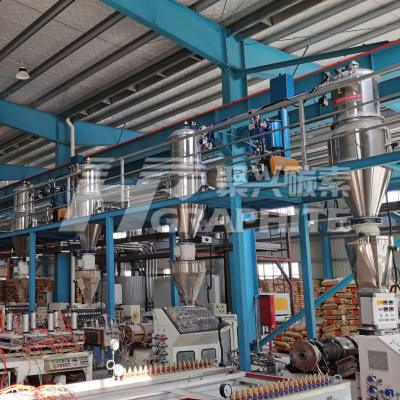【Negative Electrodes】Continuous Downstream Destocking Leads to Near-Low Prices

【Negative Electrodes】Continuous Downstream Destocking Leads to Near-Low Prices
In the first quarter of 2023, with new production capacity gradually being released, combined with a decline in cost-side prices and slower-than-expected downstream consumer demand, negative electrode material prices began to weaken. The decline in processing fees and raw material prices has reduced cost pressures on negative electrode material companies, but the slow pace of demand stimulation at the terminal has resulted in mediocre performance in the negative electrode material market.
Looking at recent negative electrode prices, the price of low-end artificial graphite products has almost dropped to the lowest point in recent years.

Looking at recent downstream demand, consumer demand is still continuing the flat trend from last year; the energy storage sector is experiencing rapid growth due to national policies and local projects, but because the previous base was small, it still cannot provide significant support to negative electrode demand, and the market is more optimistic about the subsequent demand in the energy storage sector; currently, new energy vehicles in the power sector are still the main support for negative electrode demand. However, with the end of subsidies in 2023 and the wait-and-see sentiment brought about by a new round of price cuts by some automakers, new energy vehicle sales plummeted in January. In February, sales gradually recovered with the introduction of policies and mid-range price cuts in various regions.
However, currently, all links are at high inventory levels, and downstream battery cells and end customers are still in a state of continuous destocking, coupled with large fluctuations in upstream raw material prices, the actual procurement pace downstream has slowed down.
Looking at the negative electrode materials, the prices of low-sulfur cokes have recently fallen rapidly due to lack of downstream demand support and inventory pressure. Downstream negative electrode companies have strict cost control on raw material costs due to the need to reduce costs. Currently, there is no significant improvement in terminal demand, coupled with a slight loosening of needle coke costs, resulting in a slight decline in needle coke prices.
Graphitization end:
When negotiating orders with negative electrode factories, some battery cell factories give a lower benchmark price for graphitization. Coupled with an oversupply of needle coke, the demand for lower graphitization prices by negative electrode factories is more urgent, and graphitization prices are expected to continue to decline in the short term.
Overall, negative electrode materials currently lack strong cost support, and the negative electrode sector is currently in a state of overcapacity. Continuous destocking downstream has reduced the amount of product that negative electrode manufacturers can sell, and negative electrode prices are still in a downward trend.
According to research in the second quarter of 2023, 60% of companies are bearish, and 40% of companies are stable. The bearish sentiment is that there is currently insufficient support from the cost side, and the increase in supply due to new production capacity being released. The stable sentiment is that there are many uncertain factors, and the main focus is on whether demand can boost later on.
Negative electrode material cost-side support is insufficient, coupled with weak downstream demand, and prices have reached the cost line. It is expected that in the second quarter, with demand gradually recovering, prices will slightly rebound. We will continue to keep up with the latest information on negative electrode materials, welcome your inquiries.
No related results found








0 Replies